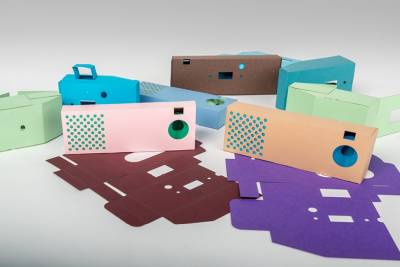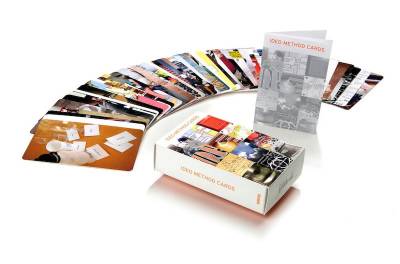Ceci est une ancienne révision du document !
Design cabinet toolkits - capitalising tools
Contenu aussi disponible en Version fr
Many things have been written about the design toolboxes, available in many versions. So what are the inspirations of the Wiki? What is the model that emerges and differentiates itself? Here is a little tour of practice horizons that caught our attention. It is simply a presentation of a method and its tools with often a dedicated context. They take the form of a website with resources in .pdf (user manual and sheets and contents to print). This can be a source of inspiration. Or, on the contrary, a path not to follow, concerning the final form of the project.
Some examples :methodologies
- The Circular Design Guide , meeting between the firm IDEO and the Ellen MacArthur Foundation. It is an application of Design Thinking to the circular economy. As often, we find a global schema describing the method, resources to apply this method, case studies.
- The Collective Action Tool Kit (pdf here) is for an audience non-professional, typically NGOs. It is not linear but proposes a series of activities synthesized in a notebook. Other link right here. By the firm frog.
- Design Thinking for Educator by IDEO, a toolkit for primary school teachers, with as often a schema of the method and a notebook in pdf.
- Design Kit: The Human-Centered Design Toolkit , project from IDEO.org, the “non-profit” of the IDEO firm: “At IDEO.org, we design products, services, and experiences to improve the lives of people in poor and vulnerable communities.” The site in him -Even presents the method and tools specific to user-centered design (note: almost the same as D.thinking), case study and proposes different types of resource):
- The traditional pdf summary available in several languages
- Links to online courses, in partnership with Acumen +. There is a general course and thematic courses to become a facilitator or to learn how to prototype.
- A card game that you can buy on Kickstarter and that synthesizes all the tools of user centered design
School doing school
Principle of an institution of higher education which communicates in a totally open way on its methods, its practices and its tools and which aim at their dissemination. here is an example :
- The d.school of Stanford University is open to his students (the “ class”) but also to a wider audience (the “ programs”). The set of “ resources” (tools, how-to, workshop guideline) is under Creative Commons Attribution-NonCommercial. There are even two musical playlists! As well as a online course.
Thoughts: how we design the wiki
A website with .pdf resources implies that the user (s) is sufficiently autonomous. Users can be people who want to learn or develop a project, or people who want to use the methods and tools of D.thinking (or other) in a broader context (project management, teaching, etc.). We are not convinced that this is suitable for many people: person-to-person transmission is essential in this type of initiative. Example to support our words: the “fall” of Mooc for lack of human commitment; Simply: can you imagine a fablab without fabmanager? without a facilitator and with only the machines and documents to use them? The role of a trainer is paramount. This wiki should be augmented with case studies, and training should be given by specialists. We can deliver the wiki & support the hubs to train them on tools.
Tangible tools
“Physical” tools designed specifically for creative project creation / design.
Some examples
- The Probetools, by Interaction Research Studio of the University of London, are cameras and dictaphones designed for user searches. Developing cultural probes by Gaver, Dunne and Pacenti. (read here also).
 —-
—-
The deck of cards / board
- This format is very popular in creativity tools, especially as ideation tools , a quick overview to be developed:
Some examples
- IDEO Method cards is a card game without really being one (there are no rules). The card game aspect appears here as a playful way and easy to relate to. It should be seen more as a synthesis of the D.thinking user search * presenting tools according to four categories (“learn”, “look”, “ask”, “try”). Each card develops the how and why of the tool, with a visual on the back. It can be purchased there or downloaded right here.

That inspires us!
By necessarily in direct link, but the form and / or the bottom can be interesting to exploit:
Datacatcher
This is a mobile device having a screen and a rotary button underneath. Short sentences appear on the screen every few seconds display information related to the immediate environment. The subjects are for example the average price of the houses, the average income, the number of bars. Turning the button allows one side to scroll through the previous messages, the other a list of multiple choice questions that the user can answer. “ here, there and there.
- Background : it is a contextual user search tool (a place)
- Shape : the object is autonomous, it is alone with the user and allows to obtain different previews

Events
Inspiring Conferences
- How to build your creative confidence by David Kelly at TED2012.
The places / structures
- CO Project Farm in Portugal: “A brain SPA for creative optimists” (° o °) —-
The Mooc's
- The Mooc, for Massive Open Online Course, designates a distance education broadcast on the Internet, by video as follows, and may be sanctioned by a diploma or certificate. Critical article on Mooc.
- Ideo U by IDEO, offers classes on demand to introduce D.thinking (videos, activities and toolkit but no follow-up) and courses spread over 5 weeks (with follow-up / exchange). See the Design Thinking Resources.
Bonus
- The cargo cult refers to popular rites of some indigenous peoples of Oceania. “It consists of imitating the American and Japanese radio operators commanding supplies (distributed by cargo plane) and more generally the technology and Western culture (means of transport, military parades, clothing, etc.) hoping to lead to the same effects […]. In fact, the natives do not know the existence and the modalities of Western production; hence, they attribute the abundance and sophistication of goods brought by cargo to a divine favor.” This term is also used in computer science “when a programmer borrows a piece of code (copy and paste) without understanding it. and hope he will do the expected thing in a different context. At a higher level, this phenomenon can also be found in the adoption of a software development method by the project manager. source.



